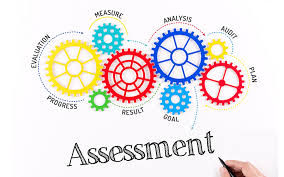How to Build a Smart Performance Appraisal System
- enriquehowarth
- May 6
- 2 min read
Performance reviews are a key part of employee development, but traditional methods often lead to stress, bias, and vague feedback. Today, businesses need a performance appraisal system that is more than just an annual checklist—it must be smart, data-driven, and focused on growth. In this article, we’ll walk you through how to build a modern, effective system that motivates employees and supports business goals.

Step 1: Define Clear Objectives
Start by defining what your appraisal system should achieve. Are you looking to reward high performers, identify training needs, or align individual efforts with company goals? A smart system should support all of these. It should also encourage open communication, goal tracking, and employee engagement.
Step 2: Use a Mix of Evaluation Methods
Avoid relying on a single rating scale or manager feedback. Instead, combine multiple sources like:
Self-assessments: Let employees reflect on their own progress.
Peer reviews: Gather 360-degree feedback for a balanced view.
Manager evaluations: Provide top-down feedback with documented observations.
This variety reduces bias and makes the system more accurate.
Step 3: Automate the Process
Use performance management software or workflow automation tools to streamline the entire appraisal process. Automation helps:
Send reminders for review deadlines
Track goals and progress continuously
Generate reports and analytics
A well-designed performance appraisal system should save time while improving transparency.
Step 4: Link Goals to KPIs
Every appraisal should tie directly to measurable goals or KPIs. When employees know what success looks like—and how it’s measured—they’re more likely to stay motivated. Use OKRs (Objectives and Key Results) or SMART goals to ensure alignment with team and company objectives.
Step 5: Schedule Continuous Check-Ins
Replace the once-a-year review cycle with regular check-ins. Monthly or quarterly meetings allow for real-time feedback, better coaching, and faster adjustments. This keeps the appraisal system active and relevant, rather than reactive.
Step 6: Make It Employee-Centric
A smart system empowers employees, not just evaluates them. Encourage open dialogue, track career development plans, and allow employees to set personal goals. Recognition and feedback should go both ways—not just from manager to employee.
Step 7: Use Data for Decisions
Leverage analytics to detect performance trends, training needs, or potential leadership candidates. A data-backed appraisal system helps HR and management make better decisions around promotions, compensation, or restructuring.
Final Thoughts
Building a smart performance appraisal system isn’t about adding more complexity—it’s about making the process fair, goal-oriented, and continuous. With clear objectives, automation, and a focus on growth, you can turn performance reviews into a powerful tool for driving employee success and business performance.
SITES WE SUPPORT
SOCIAL LINKS



Comments